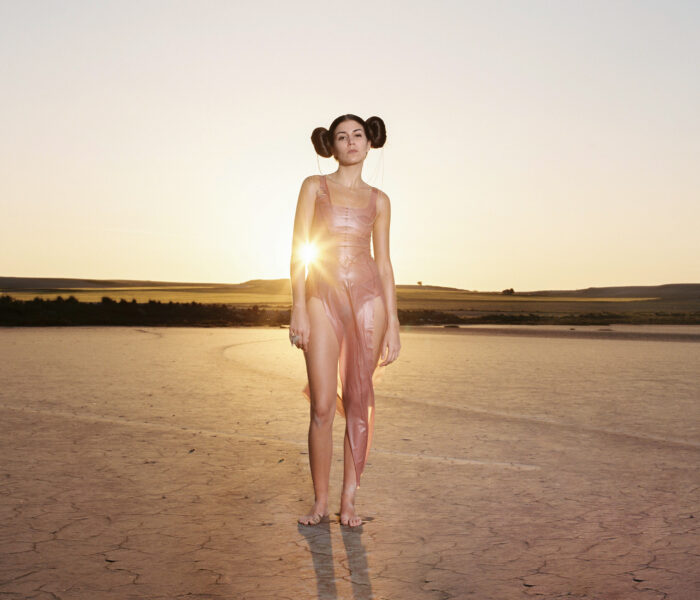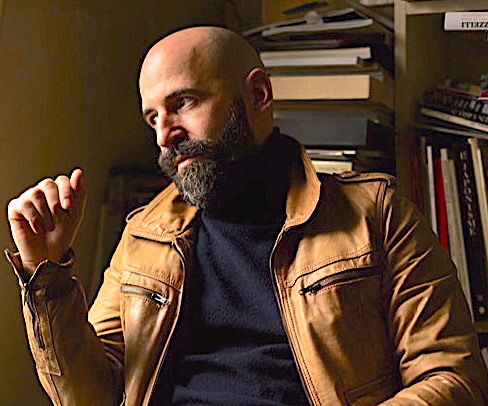Laura Farré Rozada has two souls: mathematics and music. A pioneer in the field, this young pianist born in 1990, who is beginning to make a name for herself in the world of contemporary music, has developed her own method for simplifying the process of memorizing works. She has also just released "Nimbus", published by the Seed Music label, an album in which she pays tribute to Olivier Messiaen and the music of the 20th and 21st centuries. "Nimbus", which delves into the creative possibilities of water as a source of inspiration, features works by Fukijura, Jodlowski, Ravel, Takemitsu and Zhao, among others. With this work, the young pianist follows in the footsteps of her previous album "The French Reverie".
You specialize in 20th- and 21st-century repertoire. You're a pianist and a mathematician. In fact, you've devised a new method based on mathematics to simplify the memorization process and avoid going back to the score. What does this method involve?
As I combined a career in mathematics with piano, I realized that the most effective process for memorizing a piece was not necessarily linear, but rather related to the ability to develop a mental map of the piece and resolve those points where you sometimes had to simplify the complexity in stages. I also noticed that, very often, the problem-solving strategies I'd learned in math class were also useful for dealing with the problems I encountered when learning a piece of music. Over time, I developed my own method of memorization, which enabled me to memorize music with greater confidence and musicality.
Interesting.
Yes. This method involves staggering the process of learning and memorizing a piece in different levels of difficulty, so that the brain always feels comfortable with the level and volume of complexity it's working with.
Your research highlights the relationship between mathematics and music. How close are they?
Mathematics is the foundation on which music rests in physical and theoretical terms. Music, in short, is intentionally manipulated sound. These manipulations, whether of note, rhythm, dynamics, articulation or instrument, for example, can always be justified from a mathematical point of view. And finally, in my opinion, music responds to the same paradox as mathematics: are they invented or discovered?
That's a good question.
Mathematics, on the one hand, allows us to process music on a cognitive level. All the mathematical calculations behind these manipulations of sound, we do unconsciously, but they could be transcribed into formulas, and they have a rational solidity. We begin to realize this complexity when we try to program computers to perform cognitive tasks, or simply to process sound.
What about mathematics and creation? For example, a number of composers have been inspired by mathematics in their creations. I'm thinking of Milton Babbit or Debussy. And also Steve Reich.
Also, because mathematics has been used to create music, either from scratch or by propagating musical ideas that stimulate the creation of the musical work. And although its application has become more explicit and well-known in the twentieth century and today, mathematics has been used to compose music for centuries. In fact, one of the aims of my PhD is to use mathematics to conceptualize music from a rational point of view. A perspective that has not been adopted until now, to address the challenge of memorization for classical and contemporary musicians.
You've been invited to speak at several universities. What is the relationship between fractals, the famous butterfly effect and music? Can you explain?
Fractals are a concrete application of symmetry in music. In other words, they are infinitely repeating patterns. They have been used to explain many unknown phenomena in nature, such as the shape of clouds or sea waves. The discovery of fractals and their properties has led to improvements in technology. Antennas, for example, use fractal geometry to maximize their surface area. On the other hand, the butterfly effect is a phenomenon linked to fractals and chaos theory, which logically explains why weather forecasting is so difficult.
In this sense, and to be more precise, how can mathematics be applied to the composition of a work?
It depends on how it's used. In my opinion, mathematics should always be a tool, not an end in itself. For centuries, mathematics has been used to organize music, to give it structure and coherence, and to generate variety from a single idea. However, when we listen to music, we are not aware of the mathematics behind a musical composition. This is a good sign, because it means that mathematics has been used as a tool to enrich the music. But when the aim in itself is to use mathematics to generate excessively complex music, but leave out the musical component, that's when I think the whole meaning of the artwork is lost.
His latest work, "Nimbus", pays tribute to Olivier Messiaen. The album features works by international composers such as Jodlowski, Chin, Takemitsu, Guix, Ravel,Thorvaldsdóttir, Fujikura and Zhao. What did you set out to achieve with this album? What was the gestation process like for this work?
"NimbusNimbus" is the second conceptual part of my debut album "The French Reverie" (2018). As soon as I released my first album, I saw very clearly that this project would have continuity, and I knew right away what the concept behind it and its main works would be. Despite this, I took the time to reflect and finish sketching out the album's repertoire, because for me, the gestation of an album is a pivotal moment between a process of artistic growth and a process of artistic dissemination.
And the intention?
The intention of "Nimbus", like that of "The French Reverie" is to open a friendly door to contemporary music, to all those who don't know or have never felt attracted by this repertoire. There's an educational component behind it all. But it's also an album for those who are already fans of this music and want to discover new works, because behind the album there's a great deal of research into new repertoires and a highly developed logic. The concept of "Nimbus" is water, which is the thread I use to link all the works together, and which articulates a wide variety of musical aesthetics and forms that water can adopt as an artistic format.
Drizzle Draft composed with Josep Maria Guix
So I understand that your first album, "The French Reverie", forms a whole with "Nimbus".
Both albums are inspired by the same philosophy. The two albums and their repertoires are linked, yes, and the union of the two completes this tribute to Olivier Messiaen. It's the macro-structure that gives meaning to the whole project, and justifies this choice of works and not others. In the specific case of "The French Reverie", my idea was to make the French repertoire of the 20th and 21st centuries better known, and to do so in the form of a dream, in which the influences of other European composers mingle. An underlying blending of cultures. On the other hand, "Nimbus" goes a step further and focuses on the influence of French music in Asia, in particular. A culture which, in France, was considered exotic, but which, at the same time, contributed to Europeanization. And it's this reflection that, I believe, emerges from the album, since all the composers present were trained in Europe, and were able to fuse this training with their roots.
You said earlier that the two albums aim to bring contemporary music closer to people who are not familiar with it. In that sense, do you think that new technologies can contribute to this and make contemporary music more widely known?
I don't think new technologies are of any use in this task, unless there's a pedagogical component behind them. After the Second World War, people took refuge in mathematics to make a tabula rasa of the previous musical tradition, and generate new music. In this case, the "technology" that mathematics brought to music did not contribute to its dissemination - quite the contrary, since elitism was favored over pedagogy. Although this is an anecdotal parallelism, the message I want to get across is that new technologies won't do anything by themselves, but will depend on how we use them. And in my opinion, to popularize contemporary music, you have to explain it. And of course, new technologies can help facilitate this process.
How do you see the contemporary music scene?
I think it's a scene with little self-criticism and a lot of noise. And by noise, I mean mediocre authors. In the case of the piano, there are few composers who know how to write well for the instrument, and who have interesting ideas to tell through their music. There are also some really fascinating composers, but it's often difficult to discover them because they're not always the most popular. Nevertheless, I think this is the very essence of contemporary music. Our generation is responsible for finding the geniuses of today so that they can be heard tomorrow, and with my projects I try to add my grain of sand to this task.
Which performers interest you?
One of the contemporary performers who fascinates me most is flutist Claire Chase, whom I've had the privilege of meeting. She possesses extraordinary versatility, has helped expand the contemporary flute repertoire, having commissioned numerous works for her instrument, and exerts an incredible magnetism in her concerts. Chase has collaborated on numerous occasions with Tyshawn Sorey, who is another musician I've had the pleasure of working with. Sorey opened up a world for me in the field of free improvisation, and although it's not my usual facet, for me it was a before and after in this field.
How are you coping with the pandemic and the confinements, has it affected your work, and will the planned concerts go ahead?
In the short term, the pandemic has been a permanent stress, as I've had to constantly modify my calendar and work schedule. But in the long term, it gave me the opportunity to work on my second album, "Nimbus", which I'd been thinking about for a long time. The fact that I was able to devote myself body and soul to such a project for a relatively long period of time, due to the confinement, was a great artistic opportunity, despite the difficulties. And given the fatal consequences of the pandemic, despite all the adversities, I feel lucky.
One last question: what are your expectations for Nimbus, and how would you like audiences to approach the piece?
I'd like to be able to present "Nimbus" in as many different places and to as many different audiences as possible. And as I did with "The French Reverie", to be able to present it in all the countries of origin of the composers I perform. For me, this is the second part of the recording project, that the work should go on tour, and that during the tour there should be an exchange. A diffusion of the composers' music in countries where they are totally unknown.
"Nimbus" has been very well received by critics, and its pedagogical aspect in bringing contemporary music closer to the public is very interesting.
I think Nimbus is an album that leaves no one indifferent. I'd like everyone who listens to it to do so out of curiosity, letting themselves be surprised. Let them listen actively and ask themselves what impact this music has on them. For me, the reflections that "Nimbus" can provoke in the public are the greatest reward.
Interview by Txema Seglers.
Barcelona



)

